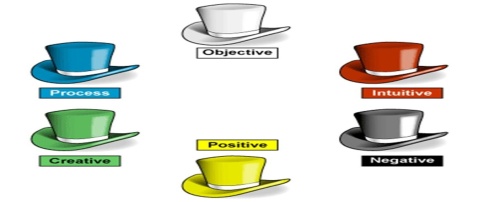|
Unit of a long term
plan
Unit
9 Science and technology
Lesson plan
102
|
School:
|
|
Date:
|
Teacher’s
name:
|
|
Class: 9
|
Number
present:
|
Number
absent:
|
|
Lesson title
|
Project.
Robots
|
|
Learning objectives(s) that
this lesson is contributing to
|
9.S1 provide basic information
about themselves and others at sentence level on an increasing
range of general topics
9.S3 give an opinion at sentence level on a limited
range of general and curricular topics
9.L4 understand the main points of supported extended
talk on a range of general and curricular topics
9.R5 deduce meaning from context in
short texts on a limited range of familiar general and curricular
topics
9.W1 plan, write, edit and
proofread work at text level with support on a limited range of
general and curricular topics
9.W5 link without support
sentences using basic coordinating
connectors
|
|
Lesson objectives
|
All learners will
be able to:
-
Recognize and use
vocabulary about the robots;
-
Identify the meaning
of the text about robots;
-
Understand the
general writing structure.
Most learners
will be able to:
-
Select, compile, and synthesize information
from the reading
passage for
an oral presentation;
-
Provide unprepared speech to answer a variety of
questions at sentence level and in conversations with some
flexibility;
-
Create a project with minimal
support.
Some learners will be able
to:
|
|
Value
links
|
Cooperation, respect each
other's opinion, functional literacy, great wish to explore space
and new lands.
|
|
Crosscurricular links
|
Science, Social Science,
Psychology, Geography, Information
Technology.
|
|
Previous
learning
|
Talking about space
travel.
|
|
Useof ICT
|
Smart board for showing a
presentation, getting additional information, playing the audio
files.
|
|
Intercultural
awareness
|
Discuss experiences and
achievements in space explorations in different
countries.
|
|
Health and
Safety
|
Breaks and physical activities
used. Everyday classroom precautions will ensure
that safety measures are provided to prevent the exposure of
electrical power cords.
|
|
Planned
timings
|
Planned
activities
|
Resources
|
|
Beginning of the
lesson
7
min.
|
The lesson
greeting.
Teacher organizes a warm-up
activity for a start of the lesson.
Learners look at the names of different things
which are on the classroom walls. They choose the things they like
and go to that place. In small groups they try to give arguments
and explain why the thingthey have chosen is the
best.
Learners are informed about the lesson
objectives.

Warm
up.Free talk about the
robots.Where can you see robots and what their functions are.The
teacher asks Sts. in pairs to make a list of books or films with
robots.(we can assume that a lot of
what people know about robots comes from films. This activity gives
students a chance to talk about films they have seen with robots in
and to discuss whether they believe any aspects of these films may
one day become a reality.
|
Slide (useful
phrases).
Pictures
PPT
Student Book
p.115
Writing
Worksheet
Pictures
PPT
Slide (useful
phrases).
|
|
Main
Activities
15
min.
12
min
|
Main
part
The teacher asks the students
to listen to a short text and speak about the robot’s
activity.
A long time ago, robots belonged to science
fiction. Children loved looking at movies with robots. Today,
robots are real, and they are helping us. In the future, we will
all have robots. They will vacuum the floor, wash the dishes, and
perhaps even drive our cars. I even think one day we’ll have robot
friends. In Japan today, robot engineers are making robots to help
old people and to keep them company. It’s still early days. I’d say
we are another 20 to 30 years away from robots being everywhere in
our lives. What will happen to us when the world is full of robots?
There’ll be no jobs. McDonalds will be full of smiling robots.
Maybe one day we won’t be able to tell robots and humans
apart. Maybe they’ll
take over the world.
What do you
think about robots? Would you like to have robots as teachers? The
teacher asks students to speak about I. Asimov and his books about
robots.

Isaac Asimov
was an American writer and professor of biochemistry at Boston
University. He was known for his works of science fiction and
popular science. Asimov was a prolific writer who wrote or edited
more than 500 books and an estimated 90,000 letters and
postcards.
Discussion of the text”
Robots”. Ex.1 p.115
In the groups of 4, the
students write a short article about robots. They also have to
think about the headline of the article. 2 students have to choose
one book of I. Asimov and write a blurb of
it.
|
https://www.listenaminute.com/r/robots.html
-
Pictures
PPT
A
whiteboard
Student Book
p.115
Writing
Worksheet
|
|
Ending the lesson
6
min.
|
Giving the home task:
A text of I. Asimov about
the future(read)
Students express their
attitude to the lesson and give self-assessment using
the method:
“Six thinking
hats”:
-
Green: How can you
use today's learning in different
subjects?
-
Red: How do you feel
about your work today?
-
White: What have you
leant today?
-
Black: What were the
weaknesses of your work?
-
Blue: How much
progress have you made in this lesson? (Now I can, I still need to
work on, I've improved in, Today I
learnt...)
Yellow: What did you like
about today's lesson?
Slide
(Homework)
Slide "Six thinking
hats"

|





















